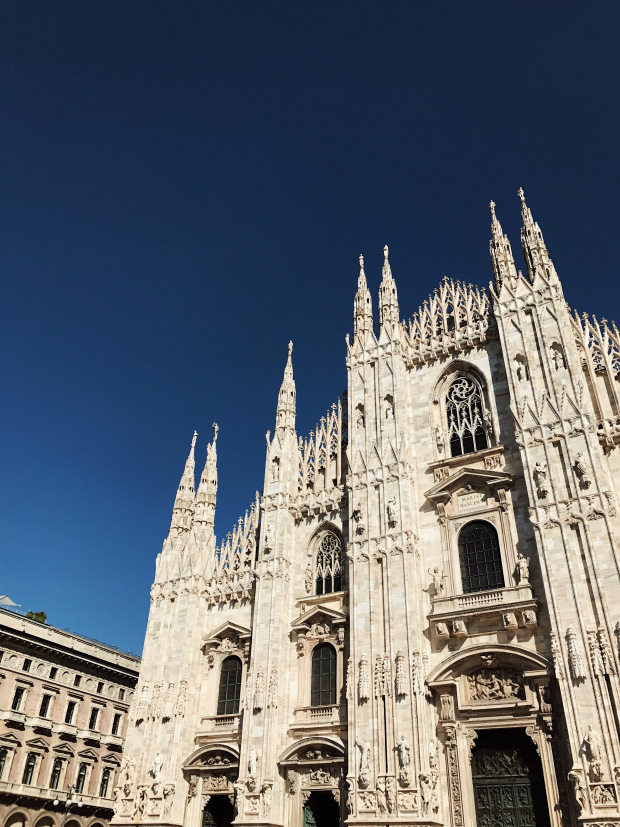By Leslie Lindsay
A tipping point of a novel with tense domestic vignettes leading each character deeper and deeper into destructive behavior.
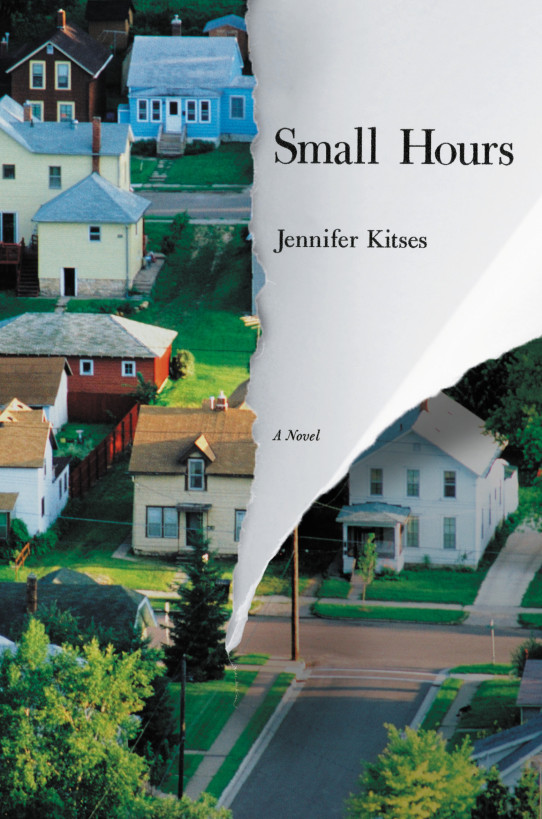
SMALL HOURS is a slow-burn, ‘tinderbox’ of a debut novel (Matthew Thomas, WE ARE NOT OURSELVES) in which we are just waiting for the inevitable to explode. We follow the lives of a married couple, Tom and Helen for 24-hours. Told in alternating POVs (Helen and Tom), we dive into a myriad of secrets, promises, deadlines, children, neighbors, etc. It’s one small step into the danger zone with each paragraph read, with each flip of the page, each turn of the hour.
I kind of wanted to shake these people.
Perhaps that is what makes Jennifer Kitses’s debut so palpable. We can *feel* the tensions arising, see the outcome before her characters and we just want to thrust an arm out and say, ‘Stop!’ But the reading is propulsive; I wanted to keep reading. It was like a bad accident on the side of the road: you don’t want to look, but you do.
Tom and Helen have left NYC for a life in a former mill town to raise their twin daughters. Helen is juggling work, kids, the home and none of it is coming together. There are teenagers from the ‘wrong side of the tracks’ who torment her and her young daughters at a local park, deadlines and more. Meanwhile, Tom is struggling to keep afloat at his newspaper job in the city, 90-minute train commutes, and a big secret.
What SMALL HOURS does so well is capture the mundane in a universal look at parenting, suburbia, the workforce, marriage, secrets, and so much more. I couldn’t stop reading; I so wanted to see what kind of train wreck they were going to walk into.
I’m honored to welcome Jennifer to the blog couch. Pull up a seat and join us.
Leslie Lindsay: Jennifer, when I first learned of SMALL HOURS, I knew I had to read it. Number one, I was taken with the cover. It gives this torn and mangled look at a domestic setting, much like the story within those pages. Was this your intention all along? Did the design team nail your overall look and feel for the story?
Jennifer Kitses: Thank you so much, Leslie! I love the cover, too and I had no idea what the publisher was planning until I saw the first version. I remember being so happy and excited when I first opened the file, because I loved everything about it: the torn-page illusion, the colors (especially the green, which gets mentioned a lot throughout the book; in my head, that was the color of the novel), and the photo itself, which to me looks just like my fictionalized Hudson Valley town.
The cover designer, Brian Lemus, surprised me by coming to my launch at the Astoria Bookshop in Queens. It was great to meet and thank him in person!
L.L.: I kind of feel like SMALL HOURS is about how little time it takes for our lives to spin out of control. While the premise of the story is to be set within a strict 24-hour time frame, it doesn’t, not exactly. There are some lingering decisions, instances that have occurred in the past (maybe up to three years earlier than the ‘present’ story), yet it all seems to come to a head on this particular day. Can you talk about the structure of the novel?
Jennifer Kitses: Very early on, and to me, this seemed like one of those rare good-luck moments that sometimes happen when you’re writing, I realized I wanted the story to unfold over one day. Back then, when I was starting on my first draft, my own twin daughters were three years old. I was freelancing as a writer and editor, and trying to take care of them at the same time. It wasn’t that unusual for both my husband and me to have work emergencies on the same day, and meanwhile one of our daughters was sick and the other was about to catch it, and then one of us would have a near-explosive encounter with a stranger on the subway or on the street. In those early years, every day felt like a marathon. That was one of the things I wanted to capture with this story, the feeling of how much could happen in a single day.
But I did allow myself a little leeway with the structure. There’s the backstory to get in, how they wound up in these situations, and what they’re already feeling as this day begins, and that’s woven through the early chapters. And even though the clock is pretty much always moving forward, there are a couple of small zigzags in the middle. But I felt that loosening the constraints of the structure made it stronger. At least, that was my hope!
L.L.: I couldn’t stop reading. Your prose is sharp and well-tuned, but it was more of the comedy of errors, the way my eyes would bulge as I read sentence after sentence of what these people were doing (or not). Were they based on anyone in particular? Inspired by any real stories or people you know?
Jennifer Kitses: A lot of the smaller images and details were borrowed from my own life or moments I’d witnessed, but those details and moments have weird ways of recombining in your head. One of my daughters once spilled Cheerios in a playground and was immediately surrounded by pigeons, and that became part of the story. But the rest of what happens in that scene was drawn from different moments, and also from wondering about what could have happened next.
“In her debut novel, Jennifer Kitses spins an intriguing tale about this couple in particular, but also about the choices people make, and what happens when plans go bad… Kitses skillfully builds the tension as our protagonists slide from one crisis to the next. As in a thriller, the reader wants to yell, ‘No! Don’t do that!’”
–Star Tribune
L.L.: There were some instances that I sort of had the sense SMALL HOURS was a collection of short stories, or even a linked novel. Is this a form you’d be willing to try?
Jennifer Kitses: That’s a really interesting question, and reminded me of something I’d almost forgotten. I did write, or tried to write, a short story that focused on the major problem faced by Tom. At that point, the main character wasn’t Tom, and the other characters weren’t there. Instead of filing the story away, I decided to expand the idea and go bigger.
I don’t know if I’d ever try to do a collection of short stories or a linked novel, because it’s pretty rare that I’ll work on something short. When I do, I think it’s my way of testing an idea. But Elizabeth Strout is one of my favorite writers, and I couldn’t love OLIVE KITTERIDGE more. And her recent book, ANYTHING IS POSSIBLE, would be a close second for a favorite linked novel.
L.L.: I want to talk about the ending a bit—but I don’t want to give away too much! There’s a bit ambiguity and can be interpreted in many different ways. My take: there is no ‘re-setting;’ the concept of sleep is elusive; a perpetual time loop. Can you speak to this, please? 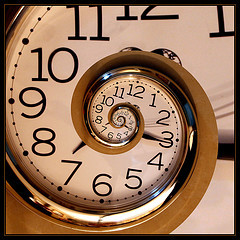
Jennifer Kitses: I did want to leave the ending ambiguous, though I think there are hints about how Tom and Helen might move forward, though readers are free to interpret those hints however they’d like. (I can think of a few very different next days or even years in their lives.) But I think it’s fair to say that Tom and Helen aren’t the same people at the end of this day; what they’ve gone through has changed the way they see each other, and also how they see themselves. To me, that’s a big part of the story: the difference between how we see ourselves and who we really are.
You mentioned a perpetual time loop, and I think feeling like you’re stuck in one is also part of the story: you might experience a life-changing day, but it’s not like you can stop the clock and fix all your problems. Now there’s a new day to face, with all of its usual tasks and problems that you have to deal with in addition to whatever you’re facing below the surface.
L.L.: What from you real-life might be a big secret or mystery that would make a good plot for a novel?
Jennifer Kitses: I’ve thought a lot about this, and I am truly stumped! Maybe that’s because I have trouble facing my biggest secrets and mysteries. Actually, this relates to some of the questions I had in mind when I was writing. How are we able to fool ourselves, even for years, about essential problems in our lives? I’m fascinated by self-delusion, and also by an almost optimistic lack of self-perception: how we sometimes tell ourselves that everything is going to be fine, even when we know it won’t.
L.L.: You’re a fabulous, no frills writer with an ear for dialogue, human behavior, and I’d compare your storytelling style to that of Lauren Acampora (See summer 2015 interview: THE WONDER GARDEN), Tom Perrotta (especially LITTLE CHILDREN), and Catherine McKenzie ( See fall 2016 interview: FRACTURED). Others have compared your writing to Richard Russo. What do you think about the comparisons and who/what do you read to keep inspired?
Jennifer Kitses: Thank you very much for those comparisons! Tom Perrotta is definitely an influence, I’m a big fan of writers I consider storytellers, the ones who pull you into a story so completely that you forget you’re reading, and he’s a master of that. I’m also very influenced by writers I discovered relatively recently (in the last 10 years), like Elizabeth Strout and Kate Atkinson. And I’m a huge fan of crime novels, especially those by Richard Price, and I think that genre has influenced how I handle tension, pacing, and suspense.
As this book was going through copyediting and production, I went on an Elena Ferrante tear. I find her books not only addictive, from a reading perspective, but also inspiring, because Ferrante is not afraid of anger. I love the angry women in her books.
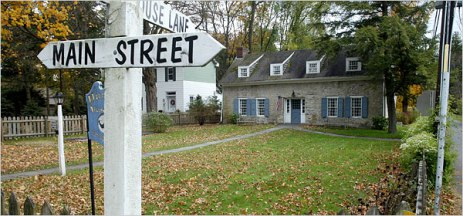
L.L.: Jennifer, it’s been such a pleasure and I am so, so glad we had the opportunity to chat. Is there anything else you’d like add—like your summer plans or what your working on next, or something I completely forgot about?
Jennifer Kitses: I wish I had elaborate summer plans, but I think I’m going to take it somewhat easy. With kids, summer seems to be about family trips (though there’s plenty of opportunity for drama there). I am working on something, but it’s in early stages. What I’m really looking forward to is getting back to reading. I have an enormous stack of books that I’ve been waiting to read, I buy books constantly, whether I have time to read them immediately or no, and among the ones I’m most excited about are Liz Moore’s THE UNSEEN WORLD, Hope Jahren’s LAB GIRL, and Roxane Gay’s HUNGER.
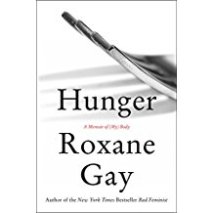
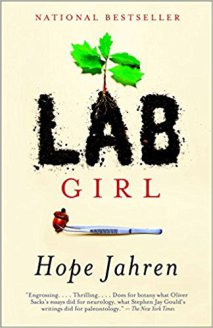

Thanks so much for these compelling questions, Leslie! It’s been a pleasure.
To connect with Jennifer via social media, or to learn more about SMALL HOURS, or purchase a copy, please visit:
- Website
- Twitter: @JenKitses
- Facebook Author Page: Jennifer Kitses
- Amazon
- Barnes & Noble
- IndieBound
- Download on iBooks
 ABOUT THE AUTHOR: Jennifer Kitses grew up in Philadelphia. She received an MLitt in creative writing from the University of St. Andrews in Scotland, and has worked for Bloomberg News, Condé Nast Portfolio, and Columbia Business School. She lives with her family in New York. Small Hours is her first novel.
ABOUT THE AUTHOR: Jennifer Kitses grew up in Philadelphia. She received an MLitt in creative writing from the University of St. Andrews in Scotland, and has worked for Bloomberg News, Condé Nast Portfolio, and Columbia Business School. She lives with her family in New York. Small Hours is her first novel.
You can connect with me, Leslie Lindsay, via these social media sites:
- GoodReads
- Facebook: LeslieLindsayWriter
- Twitter: @LeslieLindsay1

- Email:[email protected]
LOVE IT? SHARE IT!
[Cover and author image courtesy of Grand Central Publishing and used with permission. Image of bookstore front from Astoria Bookshop website, image of Hudson Valley stone house via NYTimes ‘great houses’ section, all on 6.26.17 twisty clock from,]
Share this:

